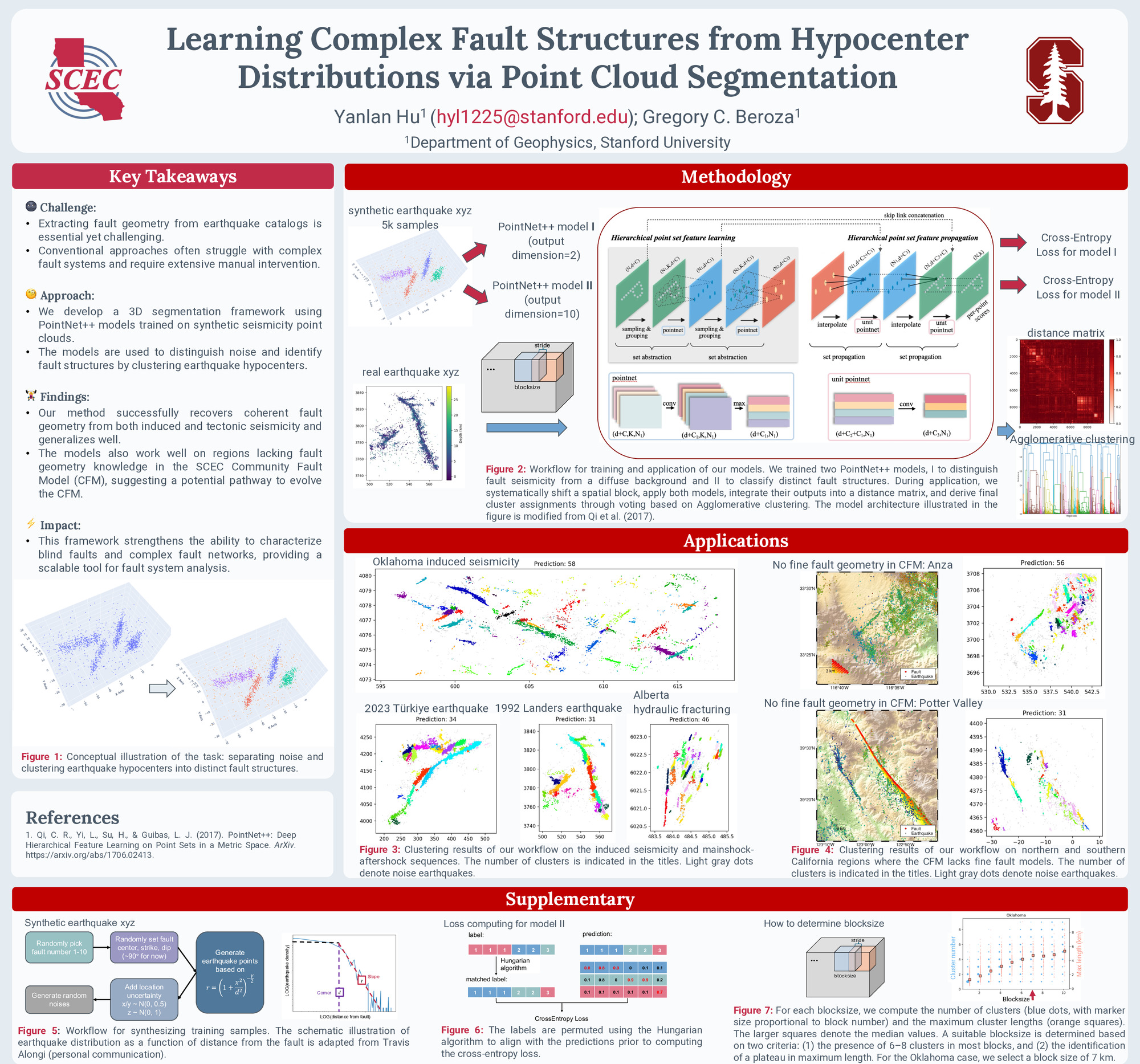Group A, Poster #005, Seismology
Learning Complex Fault Structures from Hypocenter Distributions via Point Cloud Segmentation
Poster Image:

Poster Presentation
2025 SCEC Annual Meeting, Poster #005, SCEC Contribution #14312 VIEW PDF
Accurately characterizing fault geometry is an essential task in seismology, underpinning a wide range of analyses from earthquake hazard assessment and stress triggering to dynamic rupture modeling. High-resolution earthquake catalogs – enabled by refined detection, phase picking and relocation methods – can be treated as 3D point clouds that reflect the geometry and spatial organization of active faults. Conventional approaches for extracting fault structures from hypocenter data can struggle with complex fault networks and are often analyzed with extensive manual intervention.
In this study, we recast fault structure extraction from hypocenters as a 3D semantic segmentation task and employ PointNet++, a neural network architecture designed for segmenting point clouds and to extract geometric objects from them. We train the model on synthetic seismicity datasets with known fault geometries and realistic uncertainties, and process seismicity catalogs using an iterative workflow that clusters earthquakes to reveal fault geometry embedded in the data. We apply our approach to both induced seismicity and mainshock-aftershock sequences. The model successfully recovers coherent fault structures and generalizes well across tectonic settings.
In this study, we recast fault structure extraction from hypocenters as a 3D semantic segmentation task and employ PointNet++, a neural network architecture designed for segmenting point clouds and to extract geometric objects from them. We train the model on synthetic seismicity datasets with known fault geometries and realistic uncertainties, and process seismicity catalogs using an iterative workflow that clusters earthquakes to reveal fault geometry embedded in the data. We apply our approach to both induced seismicity and mainshock-aftershock sequences. The model successfully recovers coherent fault structures and generalizes well across tectonic settings.
































